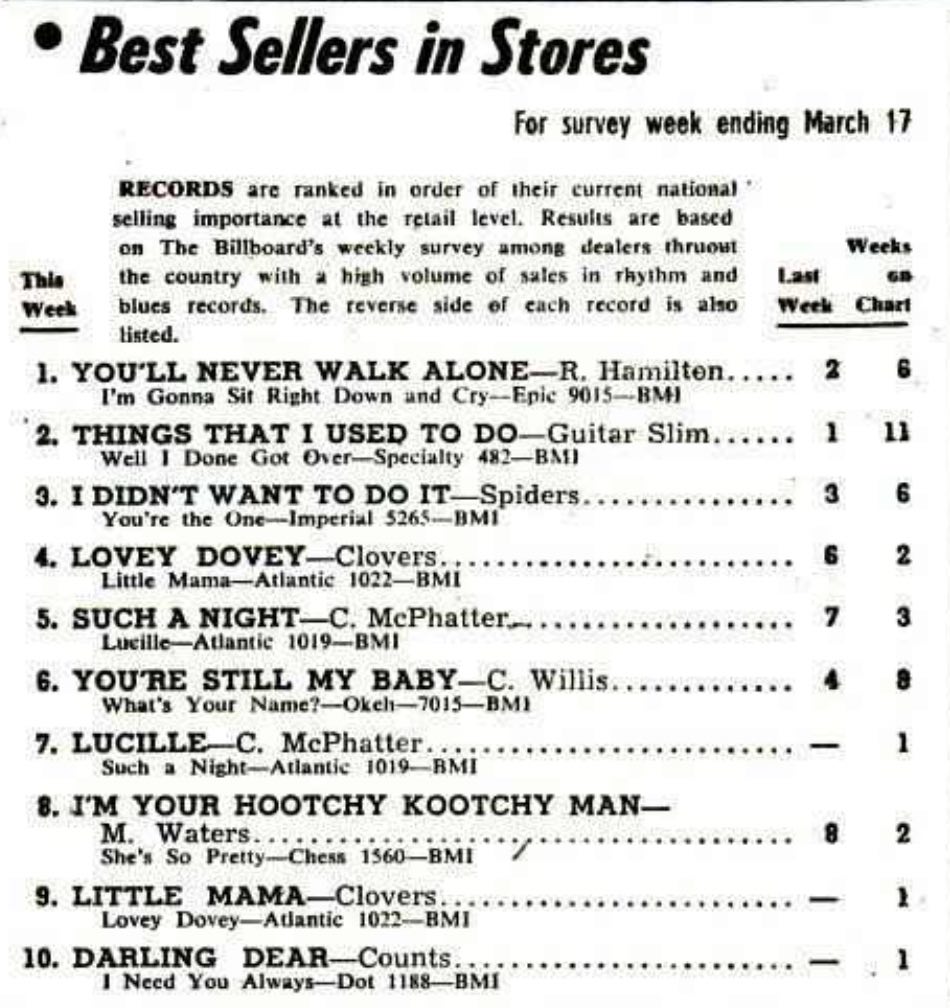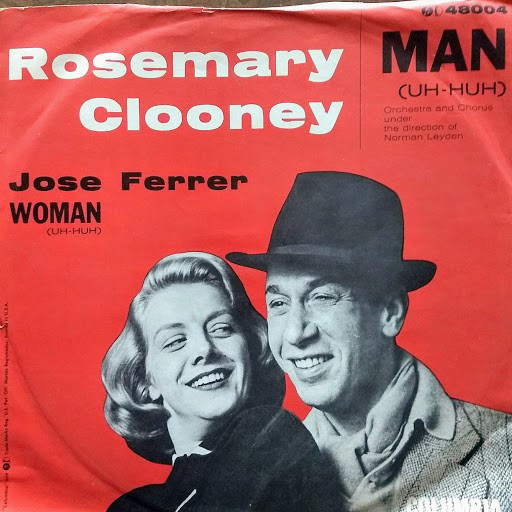Here in 2021 it’s Sadie’s first birthday. Happy birthday Sadie darling, you’re our delight! Which also means it’s nearly the first birthday of this project as we started shortly after she was born. Now let’s transport ourselves back to March, 1954 to hear what it sounds like…
The songs of March, 1954
“A Girl A Girl” – Eddie Fisher
“Answer Me My Love” – Nat King Cole
“Bell Bottom Blues” – Teresa Brewer
“Changing Partners” – Patti Page
“Cross Over The Bridge” – Patti Page
“Cuddle Me” – Ronnie Gaylord
“Darktown Strutters’ Ball” – Lou Monte
“From The Vine Came The Grape” – Gaylords
“From The Vine Came The Grape” – Hilltoppers
“Heart Of My Heart” – Four Aces
“Here” – Tony Martin
“I Get So Lonely” – Four Knights
“Make Love To Me” – Jo Stafford
“Oh My Papa” – Eddie Fisher
“Secret Love” – Doris Day
“Somebody Bad Stole De Wedding Bell” – Eartha Kitt
“Stranger In Paradise” – Four Aces
“Stranger In Paradise” – Tony Bennett
“That’s Amore” – Dean Martin
“Till Then” – Hilltoppers
“Till We Two Are One” – Georgie Shaw
“Wanted” – Perry Como
“Young At Heart” – Frank Sinatra
Just five new tunes on the mainstream charts so we’ll supplement with an R&B chart from the month:

You can listen to the full playlist on Youtube via this link or embedded below:
This month in history
This month American journalists Edward R. Murrow and Fred W. Friendly produced a 30-minute documentary, entitled “A Report on Senator Joseph McCarthy” investigating the leader of the USA’s notorious communist witch hunt of the ’50s.
The actions of the junior Senator from Wisconsin have caused alarm and dismay amongst our allies abroad and given considerable comfort to our enemies. And whose fault is that? Not really his. He didn’t create this situation of fear; he merely exploited it – and rather successfully. Cassius was right. “The fault, dear Brutus, is not in our stars, but in ourselves.”
This quote, as seemingly relevant today, comes from the conclusion to the documentary that you can watch below:
Also this month the United States tested its first lithium deuteride-fueled thermonuclear weapon on Bikini Atoll, Marshall Islands. The team of scientists behind the test expected an explosion with a yield of 6 megatons. Instead, the detonation was 15 megatons – 1000 times more powerful than the bomb dropped on Hiroshima – inadvertently making it the fifth-largest nuclear explosion in history, and causing serious problems in the area where the test took place. In the years after the test several Marshall Islanders began to experience health issues, including birth defects and tumors, as a result of the test, and the US government eventually paid them compensation.
To lighten things up here’s Dean Martin singing the still charting “That’s Amore” from the Martin & Lewis film, The Caddy.
What’d Sadie think?
There’s quite a few steps between looking at the charts, listening to them and writing these posts. Which leaves plenty of room for error. Case in point last week when I wrote about the month’s number 1s. I mentioned Doris Day’s “Secret Love” and Jo Stafford’s “Make Love to Me” traded off for alternative weeks. Actually that was _this_ months top places. Last month “Oh My Papa” by Eddie Fisher was top spot for three weeks then Doris Day’s “Secret Love”.
“A Girl A Girl” by Eddie Fisher is absolutely goofy but very catchy so a great way to start this month’s charts.
“Answer Me My Love” takes the tempo down dramatically but is yet another lovely song by Nat King Cole.
Meanwhile “Here” by Tony Martin is forgettably generic however. Whereas “Wanted” by Perry Como is nothing new from him but is a great piece of crooning.
Eartha Kitt’s “Somebody Bad Stole De Wedding Bell” is just plain weird with questionable accents. “who’s got the ding dong?”… An uncomfortable listen!
The biggest grower this week was Teresa Brewer’s “Bell Bottom Blues” which really got Sadie dancing.
Some great songs on the R&B chart this month. “You’ll never walk alone” by Roy Hamilton is a showcase of really great voice. Wikipedia tells me he merged semi-classical technique with traditional black gospel feeling – which definitely works.
Guitar Slim’s “Things that I used to do” delivers on his first name with some nice riffs. Apparently He recorded it in New Orleans, where the young Ray Charles arranged and produced the session. And it’s credited as influential on both Rock n Roll and Soul.
From guitars to rocking pianos with “I didn’t want to do it” by The Spiders which is also excellent.
Two tunes by The Clovers in the charts – “Lovey Dovey” has great horns and groove and is the best of the two. “Little Mama” is also a good tune and bit more uptempo.
Also two from Clyde McPhatter. “Such a Night” has more great horns. “Lucille” is a bit too slow by comparison.
“I’m your Hoochie Koochie man” is a Blues classic by Muddy Waters and deservedly so. It’s braggadocio echos hip hop music from 40 years later.
The chart closes out on The Counts’ “Darling Dear” which has a brill sax part and is a great slice of.
Now go listen to the full playlist on Youtube via this link.



